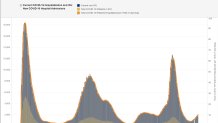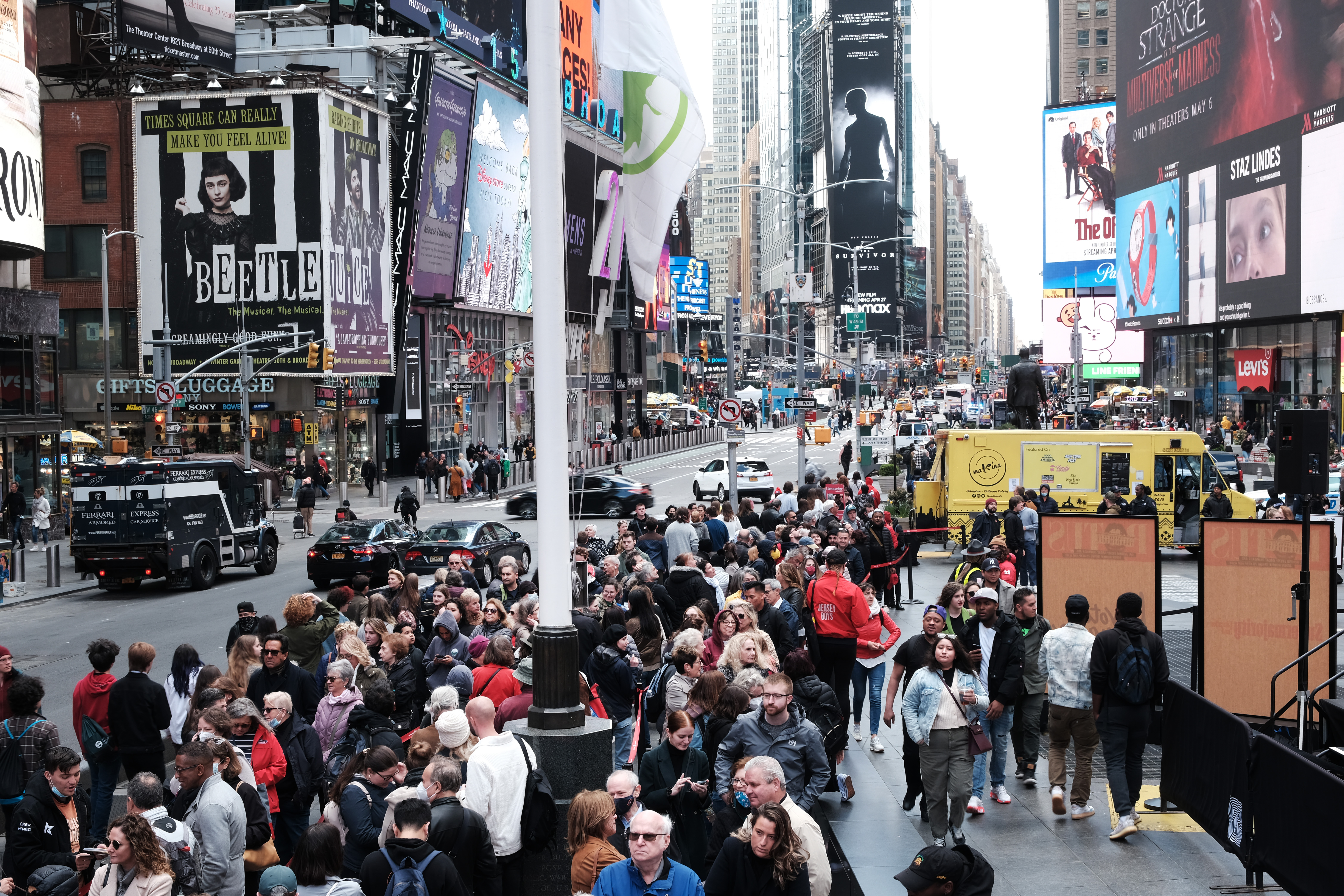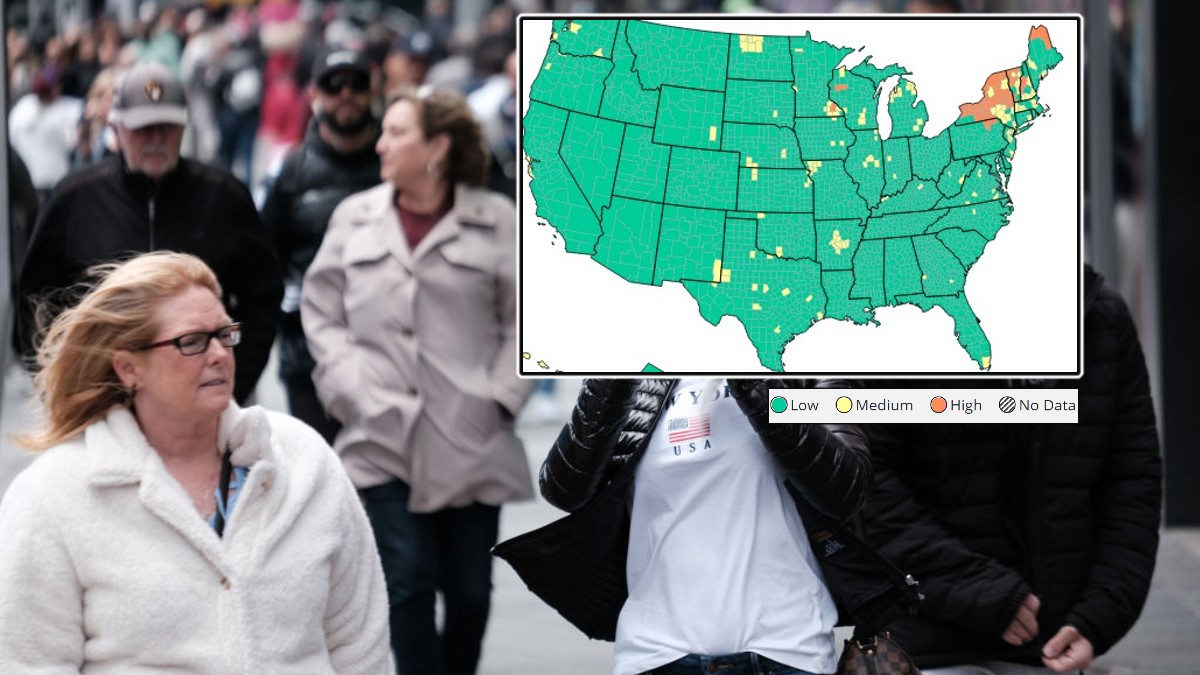New York's new COVID-19 cases topped 10,000 for the first time since late January on Wednesday, roughly tripling over a month as highly contagious subvariants of omicron trigger pleas for renewed caution from officials locally and nationally.
As of Gov. Kathy Hochul's latest update, 10,251 people had tested positive in the previous day, the highest since Jan. 28. The rolling seven-day average of new cases per 100,000 people is at the highest level since the first week of February.
In the last month, the rate of COVID hospitalizations per 100,000 New Yorkers has more than doubled, from 4.25 to 9.84, state data shows, with the Finger Lakes fueling the latest increases at a regional rate of 28.04 COVID hospitalizations per 100,000 residents on a seven-day rolling basis. And while just 47% of hospitalized patients with COVID statewide were admitted for that reason, the numbers bear monitoring.

The share of COVID patients hospitalized in Central New York, which was driving New York's COVID uptick a few weeks ago, is 62.4%, much higher than the state average, for example. At the time, health officials blamed the overall infection uptick on a higher-than-national-average prevalence of the omicron subvariants BA.2.12.1 and BA.2.12.
Now the former, which a new pre-print, not yet peer-reviewed study says is 25% more contagious than the "inherently more transmissible" omicron BA.2 subvariant that came before it, is estimated to account for up to 70% of all virus circulating in the CDC region that includes the Empire State, another week-over-week increase in prevalence.
Get Tri-state area news delivered to your inbox. Sign up for NBC New York's News Headlines newsletter.
By comparison, the high end of the CDC's estimate for BA.2.12.1's national prevalence is 45%, with BA.2 still believed to be driving the majority of cases across America. And the potential trickle-down effect in New York may already be materializing.
While Central New York's rolling COVID infection rate continues to level off or even decline, the state says, the other regions that saw sustained lower viral rates, including New York City and Long Island, are seeing their core COVID metrics tick up.
The five boroughs now have their highest COVID hospitalization rate per 100,000 residents since early March and though it remains quite low (5.86 on a rolling basis), it could very well rise in the coming weeks if the rate of infection keeps rising.
Earlier this week, New York City health officials raised the COVID alert level to medium as cases surpassed a rate of 200 per 100,000 people in the five boroughs. It marked the first time the health department has adjusted that level since debuting the new system under Mayor Eric Adams' administration earlier this year.
Two boroughs -- Manhattan and Staten Island -- are now considered medium-risk COVID counties by the CDC as well. Of the 56 U.S. counties with a high-risk CDC designation as of Wednesday, more than half are in New York state.
While no scientific evidence to date links BA.2.12.1 to more severe COVID-linked illness or reduced vaccine efficacy at this point, the heightened transmissibility appears clear.
No new COVID protocol will be implemented (or reimplemented) at this point in the city, but should the alert level reach high -- the highest of the three laid out by health officials -- an indoor face mask mandate for all people regardless of vaccination could return.
For now, NYC Health Commissioner Dr. Ashwin Vasan says New Yorkers should exercise greater caution than they have in the last few weeks -- and those who are at higher risk for severe disease from COVID, for whatever reason, are advised to consider avoiding crowded indoor gatherings and other higher-risk situations.
More Coverage
"The coming weeks will be critical to slowing the spread of COVID-19 and getting back to a low-risk level so we can more safely enjoy our spring," Vasan said Monday. "And remember, the steps you take to protect yourself also protect others, especially those most vulnerable. As a city, we have the tools we need to beat back this virus. As New Yorkers, we are in this together. By incorporating these steps into our daily lives, we can continue to look out for one another and ourselves."
The CDC also reiterated its mask advisory for travel a day ago, citing current COVID spread rates and projected trends in its decision-making process.
Subvariants BA.4 and BA.5, which early data suggest are less contagious than BA.2.12.1 but more transmissible than BA.2, have been circulating in South Africa and Europe but have not yet been detected via lab results in the U.S. They're still likely here.
Less than 1% of the country's more than 81 million COVID infections to date have been genomically sequenced to isolate variants, according to the CDC.



